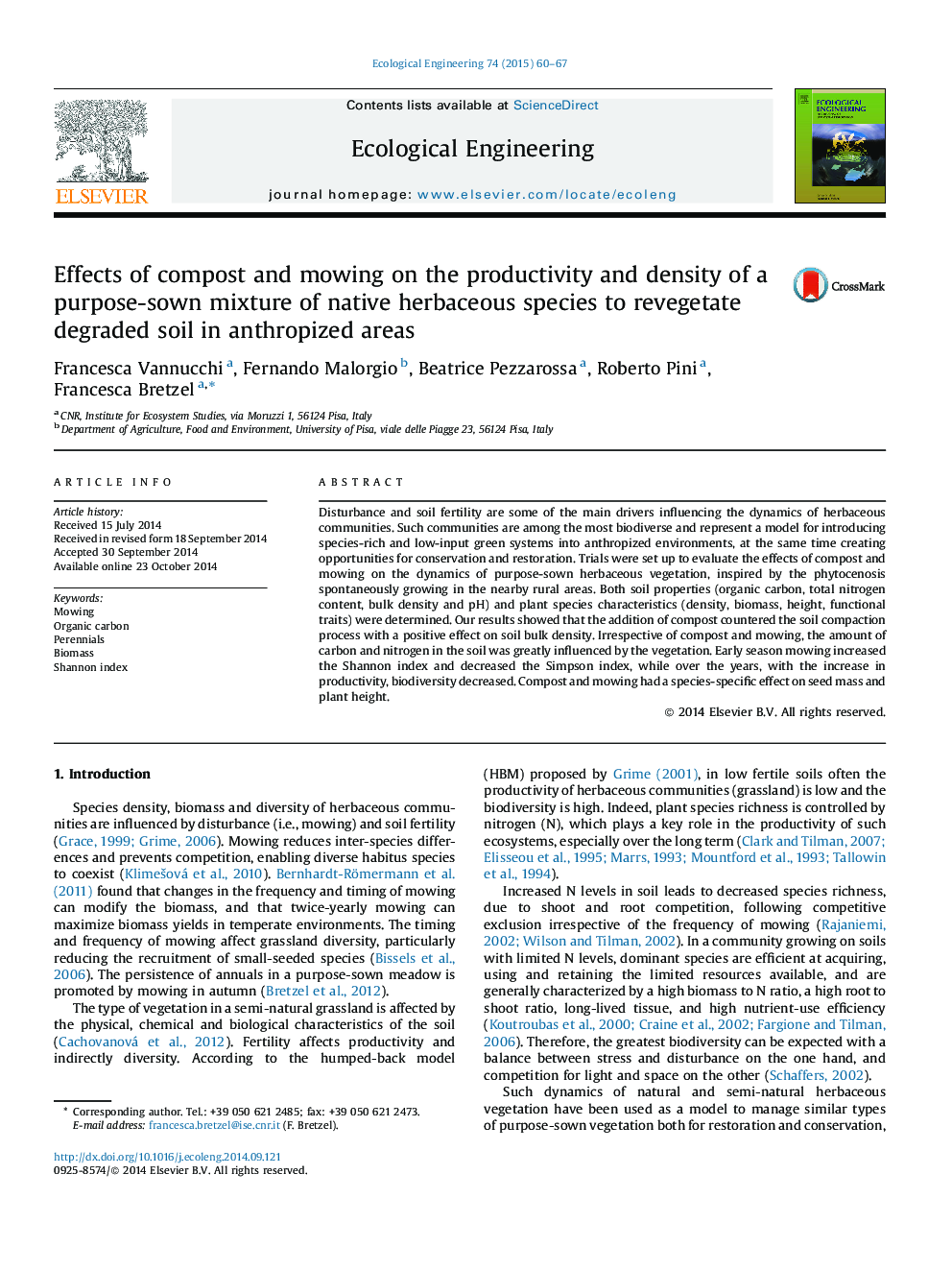| Article ID | Journal | Published Year | Pages | File Type |
|---|---|---|---|---|
| 4389295 | Ecological Engineering | 2015 | 8 Pages |
•Herbaceous vegetation increased organic matter in a poor subsoil.•Compost did not affect the density of species at emergence and establishment.•July mowing increased the Shannon index and decreased the Simpson index.•Biodiversity decreased over the years, whereas productivity increased.•Compost and mowing had a species-specific effect on traits (seed mass and height).
Disturbance and soil fertility are some of the main drivers influencing the dynamics of herbaceous communities. Such communities are among the most biodiverse and represent a model for introducing species-rich and low-input green systems into anthropized environments, at the same time creating opportunities for conservation and restoration. Trials were set up to evaluate the effects of compost and mowing on the dynamics of purpose-sown herbaceous vegetation, inspired by the phytocenosis spontaneously growing in the nearby rural areas. Both soil properties (organic carbon, total nitrogen content, bulk density and pH) and plant species characteristics (density, biomass, height, functional traits) were determined. Our results showed that the addition of compost countered the soil compaction process with a positive effect on soil bulk density. Irrespective of compost and mowing, the amount of carbon and nitrogen in the soil was greatly influenced by the vegetation. Early season mowing increased the Shannon index and decreased the Simpson index, while over the years, with the increase in productivity, biodiversity decreased. Compost and mowing had a species-specific effect on seed mass and plant height.
